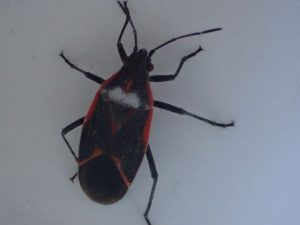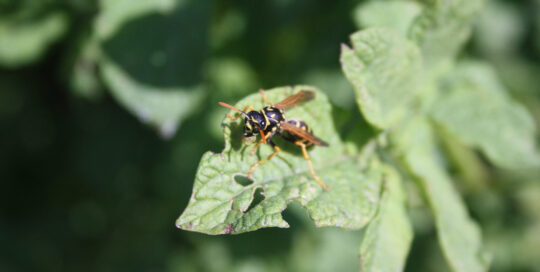What do warmer autumns mean for gardeners?
Views: 5004

One feature I really like on Facebook is being able to see what you were doing a year ago… or seven years ago for that matter. According to my memories from last year, the boys and I were out cross-country skiing to our friend’s house because everything was covered in snow. This year warmer autumns have suck up on us with being partly sunny and nearly 50 degrees. I could continue with my garden clean-up tasks because the ground isn’t even close to being frozen. I even found a box elder bug in the laundry basket the other day.
Autumnal blues
Having insects in the house isn’t that terribly uncommon in the fall. Although, I have to remind myself that we are on the back end of November. I’ve had people from all over the country, including my family in Ohio, share stories of trees seemingly being ready to leaf out again. My grandmother even said one was blooming. (I still can’t figure out what that might have been.) I do believe this is becoming the new normal. The big question for us gardeners is how we’re going to deal with it.
When we have early springs, it’s kind of obvious. The leaves emerge long before they should, birds may appear earlier. We can put veggies in weeks before the normal dates. (Granted, we’ll probably have the floating row cover at the ready in the case of a frost. But more and more springs are frost free a lot earlier than the traditional planting times.) The problem is there isn’t a lot of scientific research to paint us a picture of what exactly happens when the autumn remains mild for weeks past when it normally has turned cold. While we might be able to identify the first butterfly or flower of the season. It’s more difficult to say when you saw the last meadowlark, just to use my favorite Montana bird as an example, of the year. And how do you say the last leaf fell?
Garden enemies
What is this going to mean for pests in the garden? My assumption is the insect populations could potentially increase with a warmer autumn and longer season. Although, I wonder what they’ll eat since many (although not all) of the food sources are finished for the year. But maybe that will change, too. Outside of the stray box elder bug or beetle, we really haven’t seen more bugs or insects in the garden or even in the house so I can’t really say that there appears to be a significant impact, yet.
Advice
I guess my best advice is to make the most of the warmer autumns. Plant in the summer to enjoy a fall harvest for as long as you can. Make sure to fertilize. I called it too early this fall. We did have a hard freeze in the beginning of October. I underestimated my plants and overestimated the weather. I thought for sure it was the permanent turn for the season so I didn’t bother to cover some of the crops I should have tried to save, such as the beans that were growing wonderfully well. On a positive note, the kale and Brussels sprouts are still going strong. If a friend hadn’t brought a delicious Brussels sprouts and bacon dish yesterday for Thanksgiving, I could have harvested the ones in the garden.
As for the pests, we just have to be ready. I think the box elder bug was a reminder that with longer seasons we’ll have to be prepared to handle greater pest pressure. We might be able to ride a wave of planting early – or late – to avoid some of the pests. At least their lifecycle accommodates the longer season, which probably will happen. Nature adapts. It’s something we will have to do, too.
Meet Amy Grisak
Amy is a freelance author and photographer in Great Falls, MT who specializes in gardening, foods, and sustainable agriculture. She provides information on every kind…
Amy's Recent Posts

Looking into the Crystal Ball for a Pest Report








